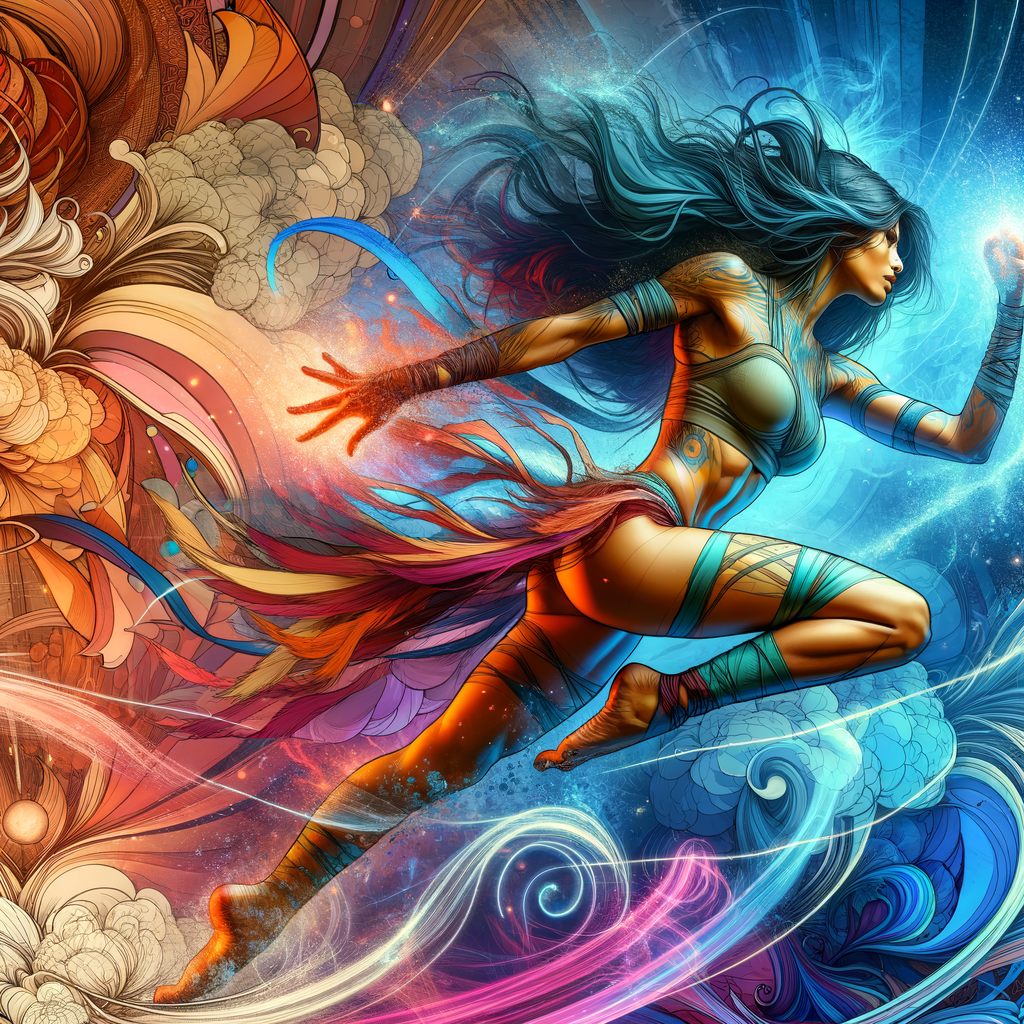
Creating dynamic characters is one of the most rewarding aspects of digital art. Understanding the fundamentals of anatomy and movement allows artists to bring their creations to life. In this article, we will explore techniques and tips that will help you master the art of character design. Whether you are a beginner looking to improve your skills or a seasoned artist aiming to refine your technique, this comprehensive guide will provide you with valuable insights into creating characters that are full of energy and personality. We will delve into the intricate details of human anatomy, explore various poses, and discuss how to convey emotion and action effectively through your artwork.
Characters are the heart of storytelling in any visual medium, particularly in digital art. From cartoons to realistic portrayals, understanding character anatomy and movement is crucial to creating believable and captivating designs. This article will take you step by step through the process of developing dynamic characters, covering essential anatomy concepts, practical drawing techniques, and tips for enhancing your artistic vision.
1. The Importance of Anatomy in Character Design
Understanding human anatomy is essential for any artist, especially those looking to create characters that are realistic and expressive. Anatomy is the framework that dictates how characters move, react, and convey emotion. Here are some key aspects to consider:
- Basic Proportions: Familiarize yourself with the standardized proportions of the human body. For instance, an adult figure is typically about 7-8 heads tall, while a child might be around 4-5 heads tall. These proportions help maintain consistency in your character designs.
- Muscle Groups: Understanding how muscles work and where they are located is fundamental for creating realistic poses. Studies of anatomy can help improve your understanding of how the body moves.
- Skeleton Structure: Knowing the underlying skeleton structure of your character is equally important. Understanding the major bones and joints will aid in depicting accurate movement.
2. Movement and Gesture Drawing
Gesture drawing is a technique used to capture the essence of a subject’s movement in a short amount of time. This is especially useful for artists looking to develop dynamic characters. Here are some techniques to improve your gesture drawing skills:
- Quick Sketching: Spend a few minutes sketching a subject in motion to practice capturing poses quickly. Use simple lines and shapes to represent forms and focus on overall movement rather than details.
- Line of Action: Start your sketches with a strong line of action that represents the flow of the pose. This line should guide the viewer’s eye and emphasize the dynamic quality of the movement.
- Exaggeration: Don't be afraid to exaggerate poses for dramatic effect. When characters are in action, slight exaggeration can help convey emotion and energy.
3. Creating Emotion through Expression
Characters come to life through their expressions. The face and body language play crucial roles in conveying emotions. Here are some tips to enhance the expressiveness of your characters:
- Facial Features: Study how facial features move when expressing different emotions. For instance, eyebrows furrowing in anger or eyes widening in surprise can significantly alter the character's perceived emotion.
- Body Language: The position of a character’s body can communicate a wealth of information about how they are feeling. Are they open or closed off? Confident or shy? Use body language to enhance your character's emotional presence.
- Contextual Clues: The environment around your character can also reflect their emotions. Consider how setting, lighting, and color can add to the narrative of your character's expression.
4. Practicing with Reference Material
Using reference material is key to improving your ability to draw dynamic characters. Here are some ways to effectively use reference:
- Photo References: Collect photos showing various poses and actions. Use these references to practice drawing from real life, which will help improve your understanding of anatomy and movement.
- Life Drawing Sessions: Attend life drawing sessions to draw from live models. This will provide you with invaluable experience in capturing movement and anatomy in real time.
- Animation Resources: Study animations and character movements in films or games. Animation can offer a deeper understanding of how characters move fluidly and naturally.
5. Creating Unique Characters
While learning anatomy and movement is essential, don’t forget to infuse your unique style and creativity into your characters. Experiment with details, clothing, and color schemes that reflect their personality and story. Here are additional ideas to help develop unique characters:
- Character Backstories: Think about your character's history, motivations, and experiences. These factors can influence their design, including their posture and expression.
- Distinctive Features: Consider giving your characters unique physical traits or features that make them stand out. This can range from a unique hairstyle to unusual clothing.
- Exploring Diverse Cultures: Draw inspiration from various cultures to create compelling characters. This adds depth and diversity to your portfolio.
Conclusion
Creating dynamic characters is an art form that requires practice, patience, and a keen understanding of anatomy and movement. By incorporating gesture drawing, emotion portrayal, and unique designs, you can develop characters that captivate and engage your audience. As you continue to refine your skills, remember to embrace your personal style and storytelling ability - it's what will make your characters truly come alive. Keep practicing and exploring the world of character design, and soon you will find yourself creating artworks that are not only visually stunning but also rich in narrative and emotion.

